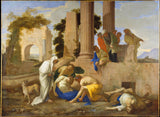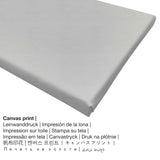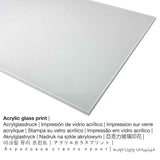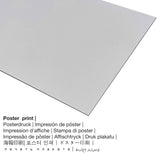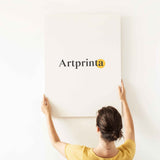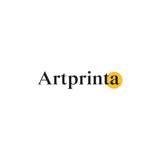Andrea di Lione, 1640 - Tobit Kuzika Wafu - chapa nzuri ya sanaa
Kodi ni pamoja. Usafirishaji umehesabiwa katika Checkout.
Ukweli wa kuvutia juu ya uchoraji huu wa zaidi ya miaka 380
In 1640 ya italian mchoraji Andrea di Lione made the baroque masterpiece Tobit Burying the Dead. Ya awali ilifanywa kwa ukubwa 50 1/4 x 68 1/2 in (sentimita 127,6 x 174) na ilitengenezwa na mbinu of mafuta kwenye turubai. Today, this piece of art is part of the collection of Makumbusho ya Metropolitan ya Sanaa. With courtesy of: The Metropolitan Museum of Art, New York, Gwynne Andrews Fund, 1989 (yenye leseni: kikoa cha umma). Zaidi ya hayo, kazi ya sanaa ina nambari ya mkopo: Gwynne Andrews Fund, 1989. The alignment of the digital reproduction is in landscape format and has an aspect ratio of 1.4 : 1, which implies that the length is 40% longer than the width. The painter Andrea di Lione was a European artist from Italy, whose style can be attributed primarily to Baroque. The European artist lived for a total of miaka 75 - alizaliwa mwaka wa 1610 na kufariki mwaka wa 1685.
Vifaa vinavyopatikana
Kwa kila picha nzuri ya sanaa tunatoa anuwai ya ukubwa na nyenzo tofauti. Tunakuruhusu kuchagua kati ya anuwai zifuatazo:
- Mchapishaji wa dibond ya Alumini: An Aluminium Dibond print is a material with an impressive depth effect, which makes a fashionable look throuch a surface structure, that is non-reflective. The bright & white sections of the original artpiece shine with a silky gloss but without the glare.
- Mchapishaji wa glasi ya akriliki yenye kung'aa: A glossy print on acrylic glass, often referred to as a print on plexiglass, transforms the original into amazing décor. Your artwork is being made thanks to the help of modern UV printing technology.
- Uchapishaji wa turubai: A canvas direct print is a printed cotton canvas mounted on a wood stretcher. Also, a canvas print generates a cosy and pleasant effect. A printed canvas of this masterpiece will let you turn your new fine art print into a large artwork as you would see in a gallery. Canvas prints are relatively low in weight, which means that it is easy to hang up your Canvas print without additional wall-mounts. Canvas prints are suited for any type of wall in your house.
- Chapisho la bango (nyenzo za turubai): Our poster is a UV printed sheet of flat cotton canvas paper with a slight surface structure. Please note, that depending on the size of the canvas poster print we add a white margin of approximately 2-6cm round about the painting, which facilitates the framing.
Ujumbe muhimu wa kisheria: We try whatever we can in order to describe the products as clearly as possible and to exhibit them visually on the product detail pages. Please keep in mind that the tone of the print materials and the imprint can differ slightly from the image on your device's screen. Depending on the screen settings and the nature of the surface, color pigments may not be printed as realistically as the digital version depicted here. Because all the are printed and processed by hand, there might also be minor variations in the motif's size and exact position.
Vipimo vya makala
| Aina ya bidhaa: | uchapishaji mzuri wa sanaa |
| Uzazi: | uzazi wa kidijitali |
| Mbinu ya uzalishaji: | Uchapishaji wa moja kwa moja wa UV |
| Asili ya Bidhaa: | viwandani nchini Ujerumani |
| Aina ya hisa: | uzalishaji kwa mahitaji |
| Bidhaa matumizi: | mapambo ya ukuta, nyumba ya sanaa ya kuchapisha |
| Mpangilio wa kazi ya sanaa: | mpangilio wa mazingira |
| Uwiano wa picha: | 1.4 : 1 urefu hadi upana |
| Maana ya uwiano wa picha: | urefu ni 40% zaidi ya upana |
| Chaguo zilizopo: | chapa ya glasi ya akriliki (yenye mipako halisi ya glasi), chapa ya chuma (dibond ya alumini), chapa ya turubai, chapa ya bango (karatasi ya turubai) |
| Chapisha turubai (turubai kwenye fremu ya machela): | 70x50cm - 28x20", 140x100cm - 55x39" |
| Uchapishaji wa glasi ya akriliki (iliyo na mipako halisi ya glasi) anuwai za saizi: | 70x50cm - 28x20", 140x100cm - 55x39" |
| Ukubwa wa bango (karatasi ya turubai): | 70x50cm - 28x20" |
| Chaguzi za kuchapisha alumini (nyenzo za dibond ya alumini): | 70x50cm - 28x20", 140x100cm - 55x39" |
| Muundo wa uchapishaji wa sanaa: | bila sura |
Maelezo juu ya kazi ya asili ya sanaa
| Jina la mchoro: | "Tobit Burying the Dead" |
| Uainishaji: | uchoraji |
| Kategoria ya jumla: | sanaa ya classic |
| Karne: | 17th karne |
| Imeundwa katika: | 1640 |
| Umri wa kazi ya sanaa: | zaidi ya miaka 380 |
| Njia asili ya kazi ya sanaa: | mafuta kwenye turubai |
| Ukubwa asili (mchoro): | 50 1/4 x 68 1/2 in (sentimita 127,6 x 174) |
| Imeonyeshwa katika: | Makumbusho ya Metropolitan ya Sanaa |
| Mahali pa makumbusho: | New York City, New York, Marekani |
| Inapatikana kwa: | Makumbusho ya Metropolitan ya Sanaa |
| leseni: | Uwanja wa umma |
| Kwa hisani ya: | Makumbusho ya Metropolitan ya Sanaa, New York, Mfuko wa Gwynne Andrews, 1989 |
| Nambari ya mkopo: | Gwynne Andrews Fund, 1989 |
Msanii
| Jina la msanii: | Andrea di Lione |
| Majina ya ziada: | Lione Andrea da, Andrea de Leoni, Leone Andrea de, Leone, Andrea Leone, Andrea di Lione, De Lione Andrea, Leone Andrea da, Andrea di Leone, Leone Andrea di, A. Leone, Andrea de Leone, Lione Andrea di, Andrea de Lione, Lione Andrea de |
| Jinsia ya msanii: | kiume |
| Raia wa msanii: | italian |
| Taaluma: | mchoraji |
| Nchi ya nyumbani: | Italia |
| Uainishaji: | bwana mzee |
| Mitindo ya sanaa: | Baroque |
| Umri wa kifo: | miaka 75 |
| Mwaka wa kuzaliwa: | 1610 |
| Mwaka wa kifo: | 1685 |
Hakimiliki ©, www.artprinta.com (Artprinta)
Maelezo ya jumla kutoka kwa jumba la makumbusho (© Hakimiliki - Makumbusho ya Sanaa ya Metropolitan - Makumbusho ya Metropolitan ya Sanaa)
The cloaked figure is Tobit, a devout Jew who in defiance of Sennacherib's orders directed the burial of the Jews whom the king had killed outside the walls of Nineveh (Tobit I:17–20). Andrea di Lione was in Rome in the 1640s, where he knew both Giovanni Benedetto Castiglione and Nicolas Poussin, and this work is indebted to both of those artists.

